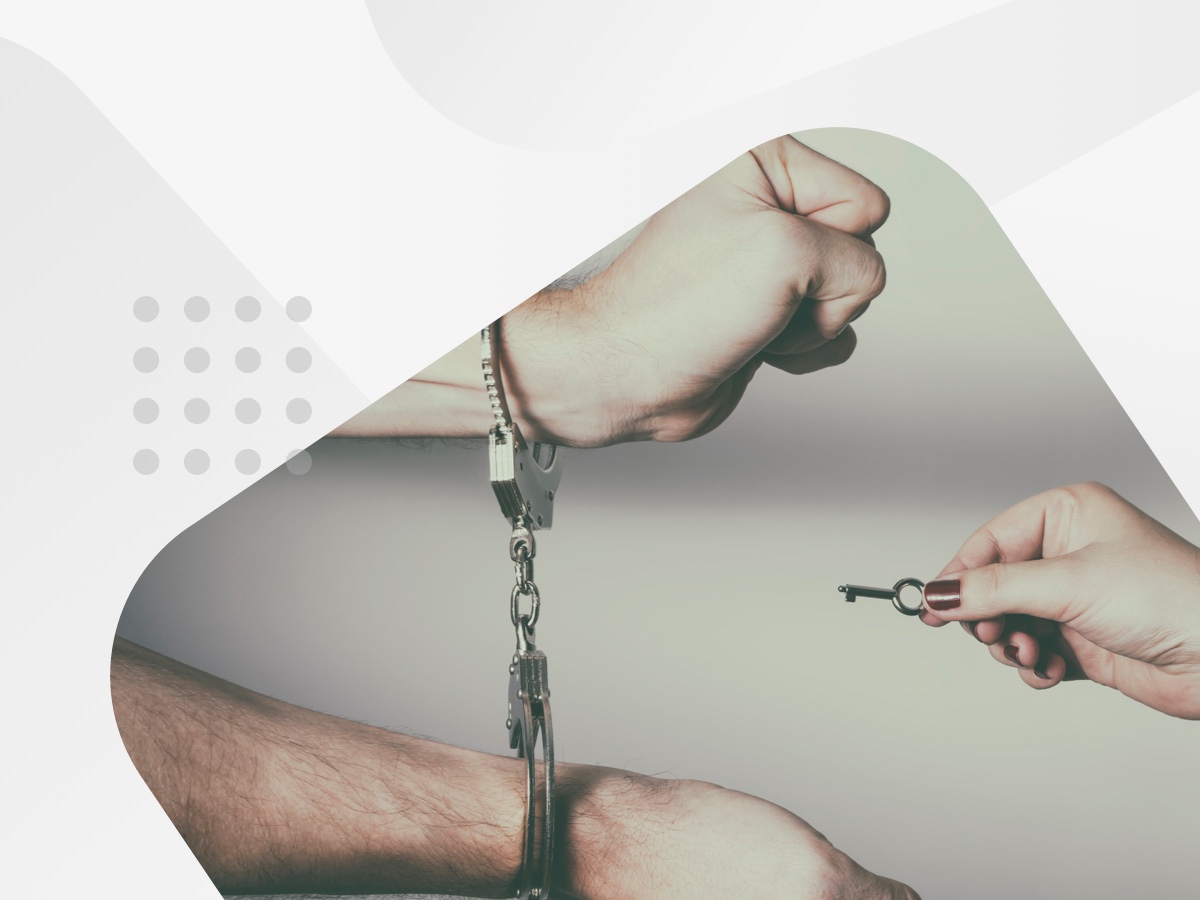Bankruptcy has a sinister reputation. It carries the stigma of failure and a perception that someone is incapable of managing their personal finances. However, there is a light at the end of the tunnel for anyone going through bankruptcy. So long as you are diligent and transparent in working with the appointed trustee to work with your creditors, you can emerge following discharge from the process debt-free and ready to commence a brand new chapter in your life.
What is bankruptcy?
The term ‘bankruptcy’ encompasses the full legal process that an individual goes through when they are considered unable to pay their debts. This includes the declaration of bankruptcy, the appointment of a trustee and settling with secured creditors.
How long does bankruptcy last?
The process typically takes three years and one day to reach discharge, although that period can be extended by the trustee to up to eight years if they successfully lodge an objection.
Within Australia, bankruptcy is overseen by the Australian Financial Security Authority (AFSA), administering the Bankruptcy Act 1966. The bankruptcy process is distinct from insolvency, which refers to companies unable to meet their debt obligations, overseen by the Australian Securities and Investments Commission (ASIC).
Will my debts be cleared?
Most of your personal debts will be cleared following discharge from bankruptcy. Additionally, If you are a sole trader or guarantor for company debt then these can also be listed in the bankruptcy filing. There are exceptions though. For example, if you owe debts in other countries then those remain outstanding as per the laws in that relevant jurisdiction. Bankruptcy also doesn’t cover debts that include:
- Court imposed penalties and fines.
- Child support and maintenance.
- HECS & HELP debts (government student loans). Note: If you have a VET-FEE HELP or VET Student Loans debt that you disagree with, please see the information at VET Student Loans Ombudsman.
- Debts you incur after your bankruptcy begins.
- Unliquidated debts (e.g. a debt where you and your creditor are yet to determine the amount).
You may need to confirm with the relevant creditor to see if your bankruptcy covers the following debts:
- Centrelink debts.
- Australian Taxation Office debts.
- Victims of crime debts.
- Toll fines.
Will I be able to apply for credit?
Yes, there are no restrictions to applying for a personal loan or credit, such as a home loan, car loan, or credit card, once you have been formally discharged from the bankruptcy process. It will take some time to restore the health of your personal credit file and some lenders may be reluctant to extend credit to you.
How long does bankruptcy stay on your credit report?
The bankruptcy will remain visible on your credit file for a number of years. You won’t see your credit score clear of this information until either two years after your bankruptcy ends, or five years from the date you become bankrupt (whichever is later). Those seeking lenders that accept applications from discharged bankrupts should seek to ensure that all other financial indicators are as positive as possible in order to allow the highest chance of approval.
Will I be able to travel overseas?
Yes, after discharge you no longer need to seek permission from the bankruptcy trustee prior to travelling internationally.
Are there any restrictions on employment or spending?
There are no legislative restrictions imposed by the Bankruptcy Act 1966 on employment or spending. However, certain professions (such as accounting and some building trades) or agencies can self-impose certification restrictions in the event of a member’s bankruptcy. It is recommended that you speak to the relevant industry body or agency to see if your employment will be affected. You can find more information about which industries are affected by bankruptcy here.
What happens to my house after bankruptcy?
It depends if the house has been claimed by the trustee as an asset. If it has, then even after discharge the trustee may be able to commence the sale of the house in order to compensate creditors. This outcome is more likely if the available equity in the house increases. Trustees regularly recalculate asset equity in order to assess the best course of action.
There are limits on the period of time a trustee holds authority over the property. This is generally accepted as being up to six years after discharge, although it may vary. For more specific information, it is recommended that you speak to your trustee.
Do I need to stay in contact with my trustee?
Generally speaking, no you don’t. In some cases, though, the trustee may continue to manage the bankruptcy even after you have been discharged. As per AFSA, they may still request that you:
- Provide information about your financial situation.
- Make any outstanding compulsory payments.
- Cooperate with obtaining valuations/appraisals of property.
- Keep your contact details up to date.
Does my name stay on the National Personal Insolvency Index (NPII)?
Yes, your bankruptcy information will remain on the public register permanently.

Where can I find additional help and support for bankruptcy?
AFSA recommends that you contact a financial counsellor for assistance if you are in need of additional support. Services such as the National Debt Helpline offer free, qualified, confidential and impartial professional support, which may assist you in managing your life after bankruptcy.
To speak with a financial counsellor free of charge, contact the National Debt Helpline (open 9:30am to 4:30pm Monday to Friday) on 1800 007 007. Additional tools and resources are also available online on the National Debt Helpline website. Surviving bankruptcies in Australia requires you to be open and transparent with your information when dealing with financial support services.
Is it possible to move on after bankruptcy?
Absolutely, there is no reason why you can’t still realise your fullest potential after being discharged from bankruptcy. However, you should make every effort to ensure that you do not repeat the same mistakes that led to that bankruptcy in the first place. Remember, bankruptcy severly impacts the livelihoods of creditors that aren’t paid.
While there are no further restrictions on applying for credit after discharge, you need to ensure that any repayments for loans after bankruptcy are well within your means to service. Stick to a well-designed budget, ideally one formed with the assistance of a qualified financial advisor, and you’ll still achieve life goals, such as buying a house. With the right financial framework, you’ll give yourself every opportunity to make a fresh start.
What does it mean to declare bankruptcy?
Declaring bankruptcy means that the individual is applying to be released from all applicable debt obligations, seeking a fresh start. Alternatively, there are instances where a creditor (someone owed money to) can apply through the courts to have the borrower declared bankrupt. Within Australia, the bankruptcy process is commenced formally in one of two ways. Either:
- Voluntary Bankruptcy – The individual lodges a Bankruptcy Form directly to AFSA. They have assessed themselves, ideally with the guidance of a financial counsellor to be unable to service outstanding debts. The information that they will need to submit to the appointed trustee includes:
- Income.
- Assets.
- Debts.
- Businesses and trusts that they are part of.
- Any court cases that they are involved in.
- Sequestration Order – A creditor applies through the courts to have a borrower declared bankrupt. This application is made by way of a ‘creditor’s petition’, and must satisfy the following three conditions in order to be successful, according to AFSA:
- The creditor must be owed an amount of $10,000 or more or, where the petition is being presented by two or more creditors, the total amount owed to these creditors must be $10,000 or more.
- The amount owed is a liquidated sum (i.e. the amount payable is ascertainable and not dependent on the outcomes of other events) and is payable immediately or at a certain future time.
- An act of bankruptcy (one of several events defined in section 40 of the Bankruptcy Act that could indicate that the debtor is unable to pay their debts) has been committed by the debtor within the six-month period before the presentation of the creditor’s petition. (Most creditors’ petitions are based on non-compliance with a bankruptcy notice. More information about bankruptcy notices is available in Applying for a bankruptcy notice.)
What happens when you claim bankruptcy and how long does bankruptcy affect me?
- Your credit file will show the bankruptcy for a minimum of five years from the date of commencement. While most bankruptcy cases reach discharge at three years and one day, the process can be extended to a maximum of eight years by the trustee, if they lodge a formal objection. Wondering, how long does it take to improve your credit score in Australia? Well, the longer it takes to reach discharge, the longer that detrimental information stays on your credit file.
- A trustee will be appointed to oversee the bankruptcy process. This will either be the Official Trustee (AFSA), or a registered trustee from the list found here. The trustee determines the plan of action for the bankruptcy, determining how assets will be used to repay creditors. The trustee will need to be informed if any information changes, such as a change in jobs, a higher or lower income, or you stop working.
- Some, though potentially not all, debts will be wiped when the bankruptcy process ends. So, does bankruptcy clear all debts? No, not all debts are able to be cleared. Unsecured debts, such as credit cards, phone plans or merchant fees, without any property or collateral to underwrite them, are the ones usually cleared by the bankruptcy process. There are certain debts that you will still be liable for, including court imposed fines and child support:
- If you earn over a certain amount, you may be required by your trustee to make compulsory AFSA indexed payments from your income to compensate creditors.
- You must seek written consent from your trustee in order to travel overseas. It is considered an offence within Australia for a bankrupt individual to travel internationally without obtaining such consent first.
- Your declared assets, such as your house may be sold by the trustee. You may still be able to retain certain household goods, cars above a certain value and tools required for your employment.
- Your name will permanently appear on the National Personal Insolvency Index (NPII). This public record ensures that no individual can hide their bankruptcy if the information is sought.
Protect against insolvent businesses with CreditorWatch
Just as bankrupt borrowers can put pressure on the revenue flow of loaning institutions when partner businesses become insolvent this can be equally devastating for your cash flow and financial stability. As a business owner, you need to be able to monitor trading partners to detect the earliest possible warning signs of insolvency.
A comprehensive and cost-effective range of tools and resources allowing Australian businesses to mitigate their exposure to insolvent business is available from CreditorWatch. Onboard and manage clients effortlessly with the DebtorLogic platform, clean up all your data with a Portfolio Health Check, access the RiskScore for all trading partners to assess creditworthiness, and analyse high-value clients more comprehensively with a Financial Risk Assessment.
Speak to our expert team today to protect yourself against bad debt and risky trading partners.

Get started with CreditorWatch today
Take your credit management to the next level with a 14-day free trial.

